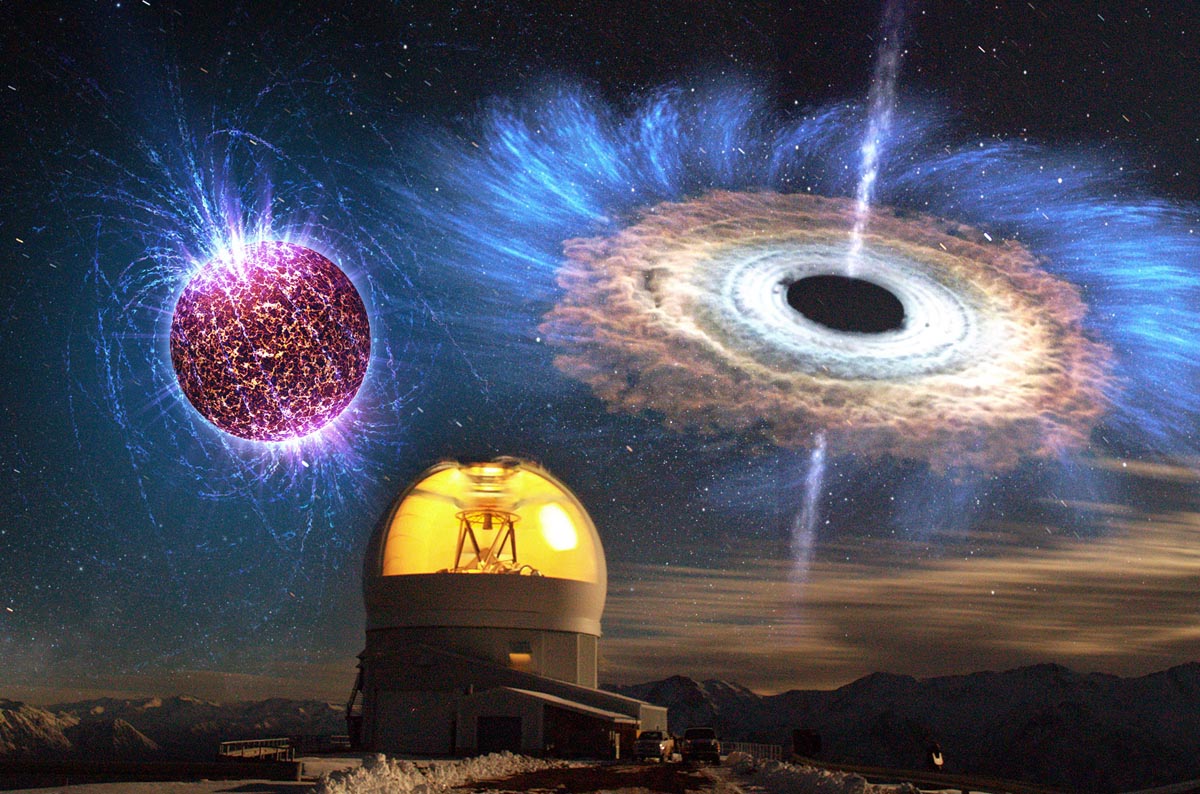NOAO: Unusual Supernova Opens a Rare Window on the Collapse of a Star
 The above image shows a long exposure of the SOAR telescope with overlaid illustrations of a highly magnetized neutron star (top left) and an accreting black hole (top right). Image credit: D. Maturana & NOAO/AURA/NSF; Overlay (top left): NASA/Penn State University/Casey Reed; (top right): NASA Goddard Space Flight Center.
The above image shows a long exposure of the SOAR telescope with overlaid illustrations of a highly magnetized neutron star (top left) and an accreting black hole (top right). Image credit: D. Maturana & NOAO/AURA/NSF; Overlay (top left): NASA/Penn State University/Casey Reed; (top right): NASA Goddard Space Flight Center.
An unusual supernova studied by multiple telescopes, including the SOAR telescope and other telescopes at the National Science Foundation’s (NSF) Cerro Tololo Inter-American Observatory (CTIO) and NSF’s Kitt Peak National Observatory (KPNO), is thought to herald the birth of a new black hole or neutron star, caught at the exact moment of its creation. Observations made with facilities ranging from X-rays to optical and radio wavelengths were used to understand this remarkable event. These multi-messenger observations give astronomers a rare glimpse into the physics at play during the creation of a black hole or neutron star.
A Mysterious Bright Glow
On June 16, 2018 a sky survey telescope in Hawai’i alerted the astronomical community to the sudden appearance of a new object in the sky. It was similar to a supernova, except that it brightened, and then faded, faster than a typical supernova, and was intrinsically brighter at its peak. A supernova (from nova meaning “new” star) is a sudden explosion of a massive star which has reached the end of its lifetime, leading to the formation of a black hole or neutron star. The transient object, assigned the designation AT2018cow, was immediately nicknamed “the Cow” based on the final 3 letters of its name. “The Cow” is located in a relatively nearby galaxy – only 200 million light years away from our own Milky Way galaxy in the direction of the constellation Hercules.

